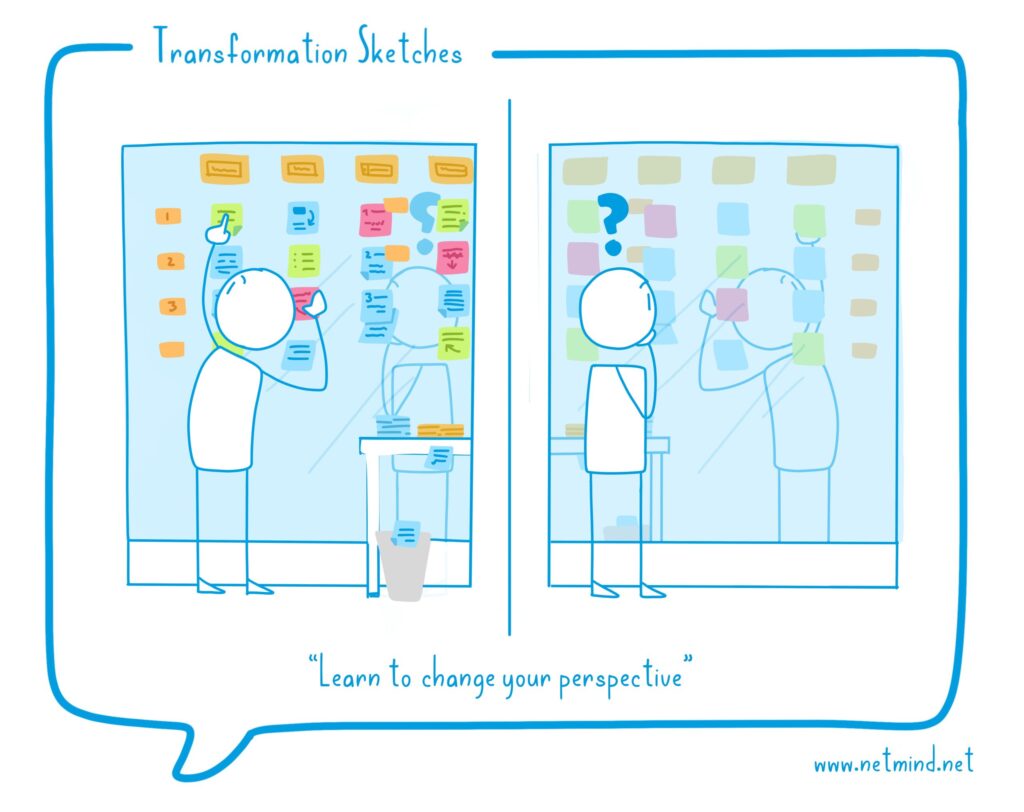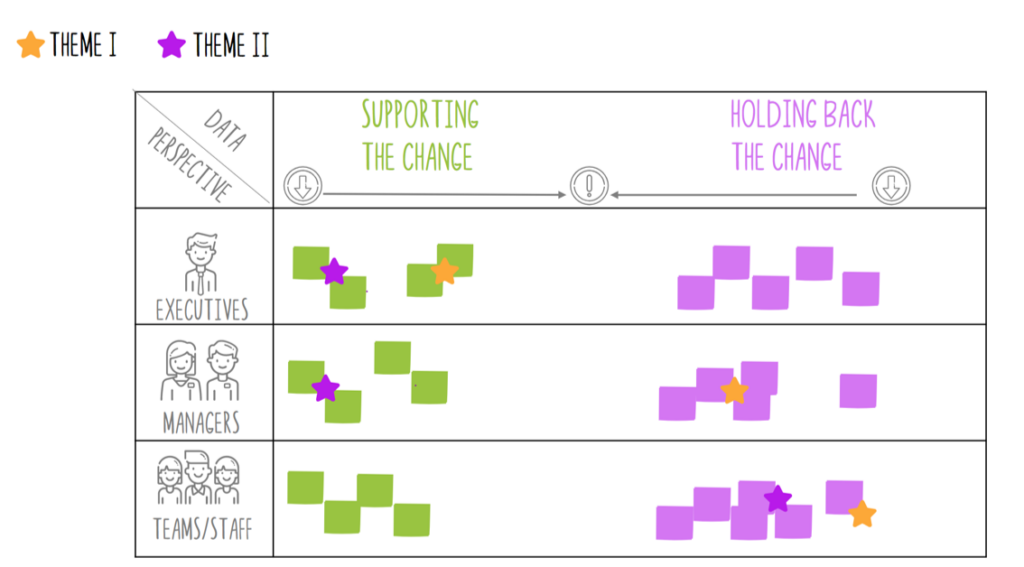Perspective mapping: a technique to put people at the center of the process-EN
Belen Oller
- Change Management
- Article
Tabla de contenidos
Since we launched the Spanish-speaking Change Management Community at Netmind, we want to contribute to ensuring that the necessary changes in organizations are approached with a human perspective, focusing on people, who are the key lever to guarantee the success of the change.
That is why, on this occasion, we want to share the Perspective Map technique used in Lean Change Management. The practice seeks to share the particular vision that people have of change and thus be able to identify blind spots and generate a deeper and more complete understanding of the impacts of change.
What is a perspective map, and what is it used for?
Perspective Mapping is a technique for generating conversation and shared understanding about the impact of change in a healthy way.
It aims to bring to the table the different views and opinions of the people impacted by the change. But, above all, this method seeks to eliminate the blind spots that may exist about the change. This generates a greater understanding of what may be happening, empathy, and alignment.
Specifically, the perspective map proposes to talk about the things driving change and the things that are taking us away from it.
The Perspective Map will encourage us to discuss what we like and don’t like, how we face changes, or any particular situation the organization is going through). We use the resource of the first person to reflect on what we believe we are doing well and what we believe should be improved.

When to use a perspective map?
- When you see the momentum for change has stopped and people are demotivated.
- When you notice that there is misalignment between people
- When you detect that people don’t know why they do what they do.
- To integrate teams working in silos
- To bring to the surface organizational dynamics that need to be changed.
- And when you feel it is necessary to generate transparent and productive conversations.
How to use a perspective map?
The version presented in the Lean Change Agent workshop is simple. It consists of asking people what they like and dislike about change, giving them a moment to reflect on it, write it down and share it visually, organizing the information in columns, and then converge and see which similar ideas emerge, which are new or which surprising.
A more elaborate version of this technique is to have predefined specific topics to discuss and organize them into columns, for example, “ways of working”, “communication”, “quality of work”, “impact on people”, etc.
The idea is to visualize the group of people who are responding, for example, “teams”, “managers”, “directors”, and try to understand what they think and feel, making a systemic reading of the organization since each one will answer from their perspective and the perspective of their role.

This Perspectives Map can be read both vertically and horizontally. It can also be read diagonally.
Continuing with the metaphor, it is a map that can take us to unknown places, allowing us to get to know new grounds.
Learning new things is always by first feeling interested and then being encouraged to explore.
How to use a Perspective Map well?
The most important thing about this type of session is not the technique. It never is; therefore, that should not be the focus.
The techniques are a means to an end; in the case of change management, it is for people to adopt new ways of working. In other words, they change their behavior, and that is because they have learned something new. To change, you have to learn.
The focus must be on generating an environment of security and trust to encourage people to share their thoughts.
This technique, in the end, is about that: getting to know different perspectives. What for? To realize something we did not know, to broaden our visions and discover new possibilities for action.
Generating an environment of trust is not always an easy task. As facilitators, we must trust the process and the people and guide them through our listening with clarifying, exploratory and powerful questions that generate reflection and learning.
As facilitators, we must start productive conversations that inspire people to become motivated and have reasons to take action. We have to help mobilize people to bring about change.
What is certainly not advisable is to miss the opportunity to take action. From what has been discussed, what the participants have realized, and what they have learned, ask yourself: What can be done to improve? How can we move forward? What can we do to feel better in our workplace and that people are at the center of the scene?